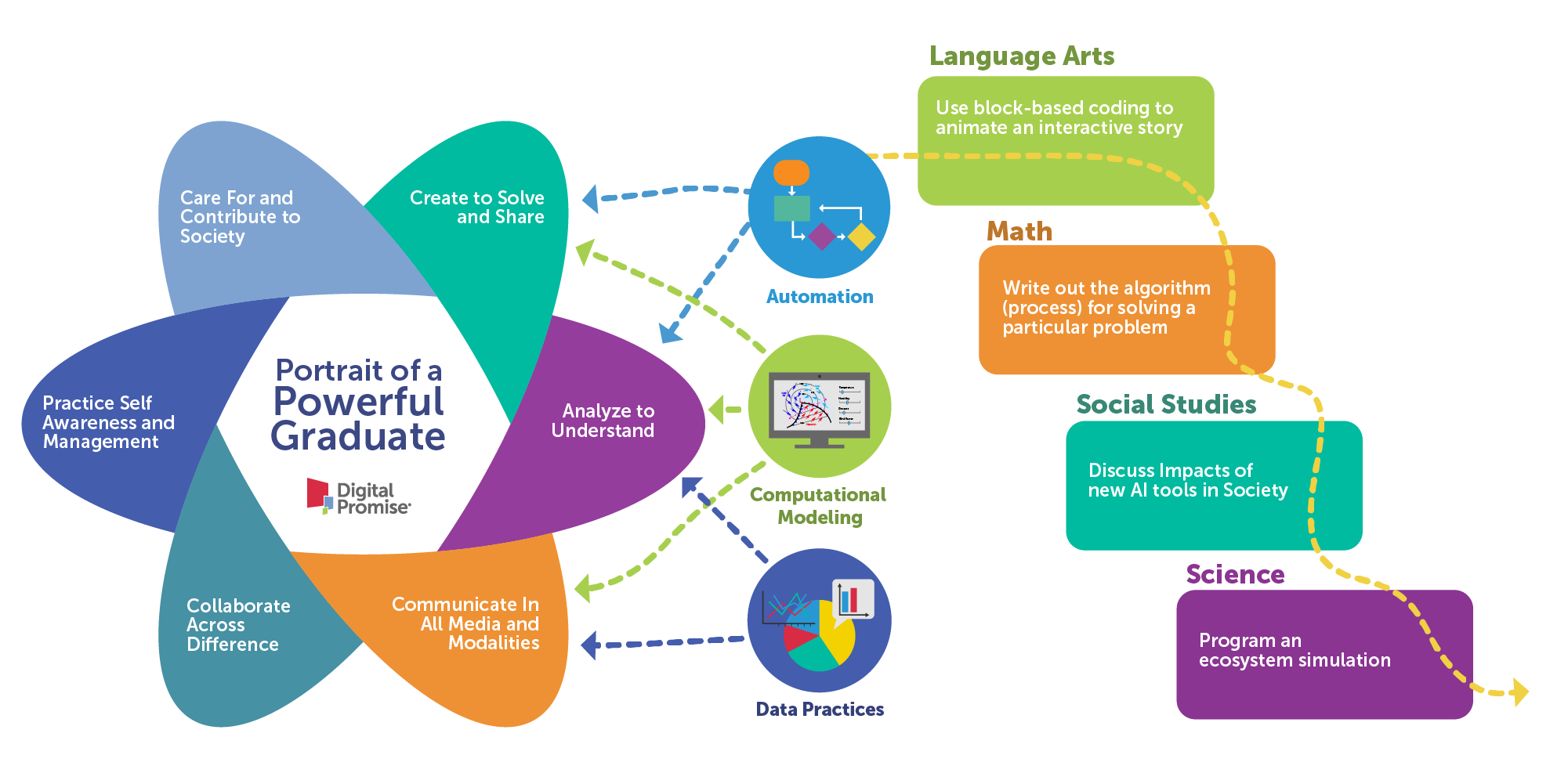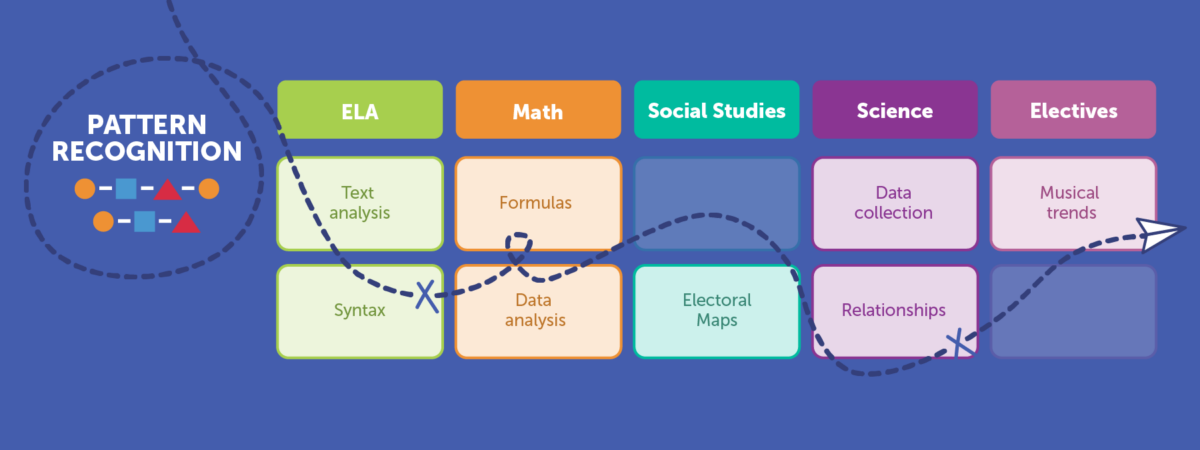Widely adopted by school districts, the
Portrait of a Graduate defines and shares the dispositions and abilities that a community believes will lead to students’ well-being, fulfillment, and economic security. We found that school districts across the nation have typically identified
six common attributes that students should embody and exemplify by graduation.
The Portrait of a Graduate is compelling because these attributes, such as “creating to solve and share,” are broad and crosscutting, which builds connection and buy-in across school communities. However, this breadth also makes a Portrait challenging to operationalize. The identified attributes are universal, but they can only be seen or acted on in context. How can we connect Portraits to pedagogy and curricula so that each attribute is actionable, visible, and explicit?
Portraits of a Graduate are broad and aspirational. How do we make them actionable?
Digital Promise has designed learning pathways to explicitly connect classroom learning to cross-cutting initiatives. These pathways articulate system-wide, K-12 learning opportunities that are consistent across classrooms, cumulative from year to year, and competency-based. We have partnered with school districts across the nation to design and implement Learning Pathways for Computational Thinking. We facilitate the collective expertise of district leaders, school leaders, and teachers to break down broad attributes into actionable practices and identify relevant learning opportunities in each grade band. Our Learning Pathways design process is described below.
- Choose Competency Focus Areas. Competency Focus Areas provide context and connection to key priorities and post-secondary pathways. Examples of competency focus areas could include social emotional learning, computational thinking, digital literacy, among others. In this step, districts identify their priority competency areas in alignment with important community priorities and student outcomes.
- Define Competency Practices. In this step, district leaders and curriculum specialists articulate core practices of the competencies that support interdisciplinary learning and connect to portrait dispositions. Competency Practices make focus areas visible and implementable and connect to both portrait domains and subject area standards.In the example illustrated below, practices associated with computational thinking include automation, data practices, and computational modeling. These connect to the portrait dispositions Create to Solve and Share, Analyze to Understand and Communicate in All Media and Modalities.
- Map Practices to Curriculum. In this step, curriculum specialists and teachers work together in teams to articulate developmentally appropriate sub-practices by grade band and connect them to academic standards and specific curricular integration moments. In doing so, they will be intentionally designing learning opportunities that integrate the identified components of Portrait of a Graduate for each practice. This mapping enables districts to explicitly and consistently integrate the most impactful practices into specific units and lessons. By articulating a progression of these practices across grade bands the learning experience can be cumulative, building more advanced skills towards the Portrait of a Graduate over the entire K-12 experience. In the example illustrated below, Middle School educators identified opportunities to integrate automation, a computational thinking practice that includes elements of both programming and artificial intelligence, across disciplines. In language arts, students might use automation to animate an interactive story. In math, they might use an algorithm for solving a particular problem. In social studies, students can discuss impacts of AI tools on society. In science, they might create a simulation of an ecosystem. All of these are disciplinary-specific and grade-level appropriate applications of Automation, which students use to enact the portrait dispositions Create to Solve and Share and Analyze to Understand.

Overall, this process allows districts to identify priority focus areas, practices, and skill progressions that make portrait domains visible for teachers and learners, and allow identification of specific integration points in curriculum. As a result, districts design learning pathways in ways that are aligned with their internal initiatives and vision in order to develop student dispositions and career connections that will better position learners for well-being, fulfillment, and economic security.
Looking Ahead
Expanding from our work with districts designing Computational Thinking Pathways, Digital Promise is developing processes, practices, and resources for school districts to design integrated, competency-based, learning pathways that align with the full Portrait of a Graduate. Over the next several months, we will share more of what we have learned about the Graduate Portrait, our emerging research and development into best practices to make these portraits more actionable, and opportunities to partner with us so we can continue to learn from each other.
To receive timely updates on this work please subscribe to our Action Report newsletter.



